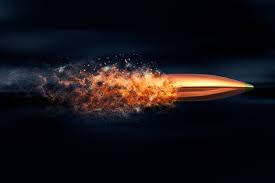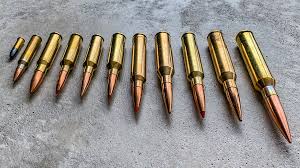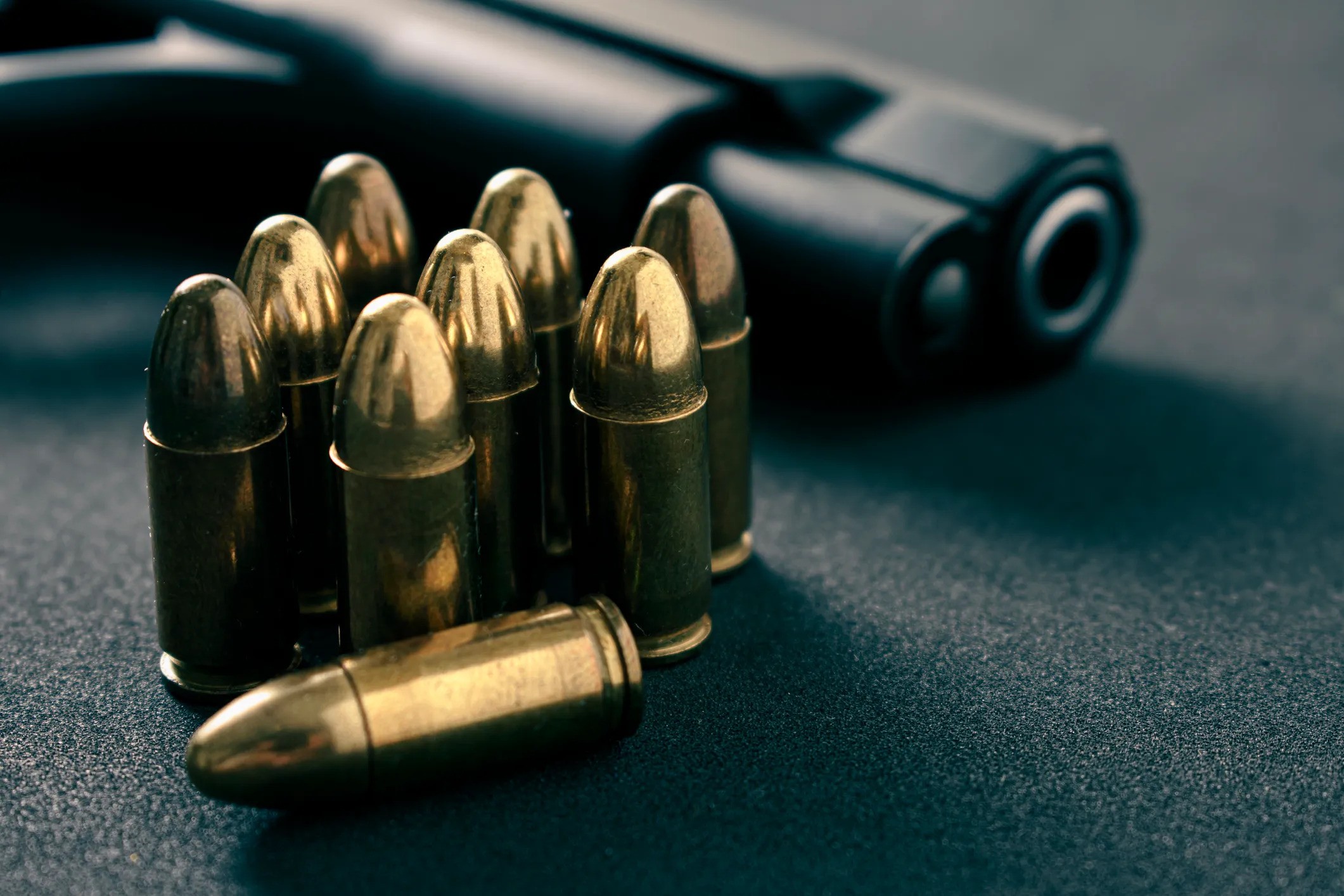How Fast Does A Bullet Travel?
Though most of us are aware of the adage "faster than a speeding bullet," how many of us are certain of its actual speed? Additionally, the speed of a bullet is crucial for military, sporting, and hunting purposes, making this a crucial subject. How fast does a bullet travel then?
Author:Xander OddityReviewer:Dr. Felix ChaosphereJul 20, 202431.8K Shares677.3K Views

Have you ever pondered how quickly a bullet leaves a pistol when it is fired? An interesting field of science and technology is revealed by this query. Bullets travel at astonishing speeds, far quicker than the majority of items we encounter in our daily lives.
Though most of us are aware of the adage "faster than a speeding bullet," how many of us are certain of its actual speed? Additionally, the speed of a bullet is crucial for military, sporting, and hunting purposes, making this a crucial subject. How fast does a bullet travelthen?
The velocities of bullets are determined by their caliber; the .222 Remington round may reach speeds of over 3165 feet per second (2,155 miles per hour). Nine millimeter rounds leave the barrel at around 1,200 fps (820 mph), whereas 22 LR bullets go at about 1,500 fps (1,022 mph). Bullets travel 2,493 feet per second, or 1,700 mph, on average.
Understanding Bullet Velocity
Regrettably, there isn't a single standardized unit for measuring speed. It can be expressed in various ways, such as kilometers per hour or yards per minute. In the context of bullets, however, feet per second (fps) and miles per hour (mph) are commonly used measurements in the United States. These will be the units we refer to in this discussion.
Bullet speed is typically measured in mph at the moment it exits the barrel, known as muzzle velocity. This marks the point where the cartridge's propellant ceases to accelerate the bullet, making it ready to strike a target. Understanding firearms involves grasping a range of related terms. Two key ones are caliber (the bullet's diameter, usually in inches or millimeters) and grain (the bullet's weight, usually in grams).
Factors Affecting Bullet Speed
Caliber
Caliber is by far the most important element influencing bullet speed. For those who don't know, caliber is the diameter of the bullet, which is typically expressed in either inches or millimeters. Thus, the calibers of.308, .22, and 9mm are all different.
Because caliber controls the maximum size of the projectile and the amount of propellant that can fit in the cartridge, it has an impact on bullet speed. Larger caliber bullets will therefore usually travel slower since they contain a heavier projectile.In light of this, the table that follows will enable us to view the average speeds of the several rounds. The table is set out in ascending order by caliber size.
Bullet Style
Naturally, there are other factors that affect bullet speed besides caliber. Although it is the most significant, the bullet style as a whole also has an impact. The round can reach a higher velocity the more aerodynamic it is. Therefore, boat tail rounds will be faster and more sleek than round nose rounds because of their small tip that widens to a streamlined base. Similarly, hollow points, which have a greater surface area overall and curve inward, may encounter greater resistance from pointed bullets.
Since metal plating functions as a lubricant inside the barrel, full metal jackets fly much quicker. Lead round nose bullets, on the other hand, move much more slowly because of increased friction inside the barrel. Furthermore, bullet grain, or weight, is also important. Even within a given caliber, this component can vary. Bullets that are lightweight will move more swiftly because they need less energy to move.
Barrel Length
Another important factor influencing bullet speed is barrel length. Longer barrels accelerate a shot more because they let the propellant effect on it for a longer period of time. As a result, the projectile shoots out of a longer barrel at a somewhat faster speed. Rifles will therefore always fire ammo at a faster rate than handguns of the same caliber.
Following a strenuous shooting day, you should anticipate a minor slowdown in your shots as maintaining a clean barrel will also lessen internal friction. Another important factor influencing bullet speed is barrel length. Longer barrels accelerate a shot more because they let the propellant effect on it for a longer period of time. As a result, the projectile shoots out of a longer barrel at a somewhat faster speed. Rifles will therefore always shoot quicker as a result.
Cartridge Power
The kind of round you're using can also affect how fast you go. High-powered shots will fly faster since they have more propellant. Moreover, centerfire bullets such as the 5.56/223) will travel farther than rimfire bullets such as the.22 LR. With centerfire, the energy burst is focused behind the bullet's center rather than around its periphery.
Bullets Decelerate Over Time
Bullets, upon leaving the firearm's barrel, begin to decelerate due to various factors. This deceleration impacts their trajectory, accuracy, and effectiveness, and understanding this phenomenon is crucial for shooters, hunters, and ammunition manufacturers.
Air Resistance And Drag
The primary cause of a bullet's deceleration is air resistance, also known as drag. As the bullet travels through the air, it encounters friction from air molecules, which slows it down. The magnitude of this drag depends on several factors:
- Bullet Shape and Aerodynamics: Streamlined bullets, such as those with a pointed or boat-tail design, experience less air resistance compared to blunt or flat-nosed bullets. Improved aerodynamics help maintain higher speeds over longer distances.
- Speed: Drag increases with the square of the bullet’s speed. Thus, faster bullets experience significantly more air resistance than slower ones. As the bullet slows down, the deceleration effect due to drag diminishes.
- Air Density: Environmental factors such as altitude, temperature, and humidity affect air density. Higher altitudes have thinner air, resulting in less drag and slower deceleration, while lower altitudes or colder temperatures increase air density and drag.
Gravity
Gravity is another force that impacts a bullet's trajectory. While it doesn’t directly slow the bullet's horizontal speed, it causes the bullet to drop over time, affecting its vertical velocity. This downward pull results in a curved flight path known as a ballistic trajectory.
Stability And Gyroscopic Effects
Bullets are typically spun by rifling in the gun barrel, which imparts a gyroscopic effect, stabilizing the bullet in flight. However, as the bullet decelerates, the stabilizing forces can wane, potentially causing the bullet to wobble or yaw, which further increases drag and deceleration.
Terminal Ballistics
Understanding bullet deceleration is crucial for terminal ballistics, which studies the behavior of a projectile when it hits its target. A bullet’s velocity upon impact significantly affects its ability to penetrate and cause damage. High initial velocities are essential for achieving the desired terminal performance, but as the bullet decelerates, its effectiveness can diminish.
Practical Implications
For shooters and hunters, understanding bullet deceleration is vital for accuracy and effectiveness. Knowing how different bullets behave over distance helps in making informed choices about ammunition selection based on the intended use, whether for long-range shooting or hunting.
- Ammunition Selection: Different ammunition types are designed for specific purposes. For instance, match-grade bullets are engineered for long-range accuracy with minimal deceleration, while hunting bullets might prioritize terminal performance.
- Sight Adjustment: Shooters must adjust their sights or scopes to account for the bullet drop due to gravity and deceleration. This process, known as zeroing, ensures accuracy over various distances.
- Environmental Considerations: Shooters must account for environmental conditions, such as altitude and temperature, which affect air density and, consequently, bullet deceleration.
How Fast Does A Bullet Travel - FAQs
What Are The Four Golden Rules Of Gun Safety?
Always treat the gun as loaded. Always keep the gun pointed in a safe direction. Always keep your finger straight and off the trigger until you are ready to shoot. Always keep the gun unloaded until you are ready to use it.
What Is The Top Speed Of A Bullet?
Firearm muzzle velocities range from approximately 120 m/s (390 ft/s) to 370 m/s (1,200 ft/s) in black powder muskets, to more than 1,200 m/s (3,900 ft/s) in modern rifles with high-velocity cartridges such as the . 220 Swift and.
What Is The Highest Velocity Bullet?
220 Swift is the fastest commercial cartridge in the world, with a published velocity of 1,422 m/s (4,665 ft/s) using a bullet of 1.9 grams (29 gr) and 2.7 grams (42 gr) of 3031 powder.
Which Gun Shoots The Fastest Bullet?
The fastest-firing guns in the world.
- Fastest-firing machine pistol: Glock 18.
- Fastest-firing submachine gun: KRISS Vector.
- Fastest-firing assault rifle: AN-94.
- Fastest-firing non-assisted belt-fed single-barreled machine gun: MG42 / MG3.
- Fastest-firing single-barrel gun: Rikhter R-23.
Wrap Up
Bullets shoot at amazing speeds, they frequently go faster than sound. When a gun is discharged, strong forces and perfect engineering come together to produce this amazing velocity. We can better grasp the intricacy and ingenuity of weapon technology when we comprehend the bullet's speed.
It also emphasizes how crucial it is to use caution and decency when handling such strong instruments. For the purpose of science, technology, or personal education, this article of how fast does a bullet travel has offerred important insights into the dynamics of fast motion and the exciting field of trajectory.

Xander Oddity
Author
Xander Oddity, an eccentric and intrepid news reporter, is a master of unearthing the strange and bizarre. With an insatiable curiosity for the unconventional, Xander ventures into the depths of the unknown, fearlessly pursuing stories that defy conventional explanation. Armed with a vast reservoir of knowledge and experience in the realm of conspiracies, Xander is a seasoned investigator of the extraordinary.
Throughout his illustrious career, Xander has built a reputation for delving into the shadows of secrecy and unraveling the enigmatic. With an unyielding determination and an unwavering belief in the power of the bizarre, Xander strives to shed light on the unexplained and challenge the boundaries of conventional wisdom. In his pursuit of the truth, Xander continues to inspire others to question the world around them and embrace the unexpected.

Dr. Felix Chaosphere
Reviewer
Dr. Felix Chaosphere, a renowned and eccentric psychiatrist, is a master of unraveling the complexities of the human mind. With his wild and untamed hair, he embodies the essence of a brilliant but unconventional thinker. As a sexologist, he fearlessly delves into the depths of human desire and intimacy, unearthing hidden truths and challenging societal norms.
Beyond his professional expertise, Dr. Chaosphere is also a celebrated author, renowned for his provocative and thought-provoking literary works. His written words mirror the enigmatic nature of his persona, inviting readers to explore the labyrinthine corridors of the human psyche.
With his indomitable spirit and insatiable curiosity, Dr. Chaosphere continues to push boundaries, challenging society's preconceived notions and inspiring others to embrace their own inner tumult.
Latest Articles
Popular Articles

